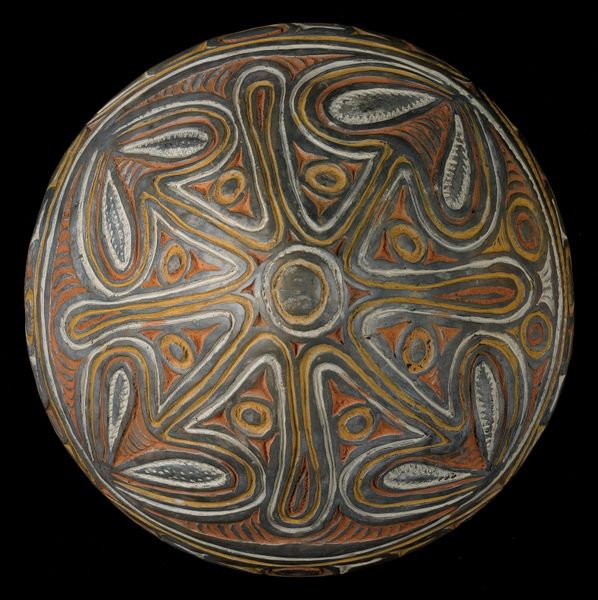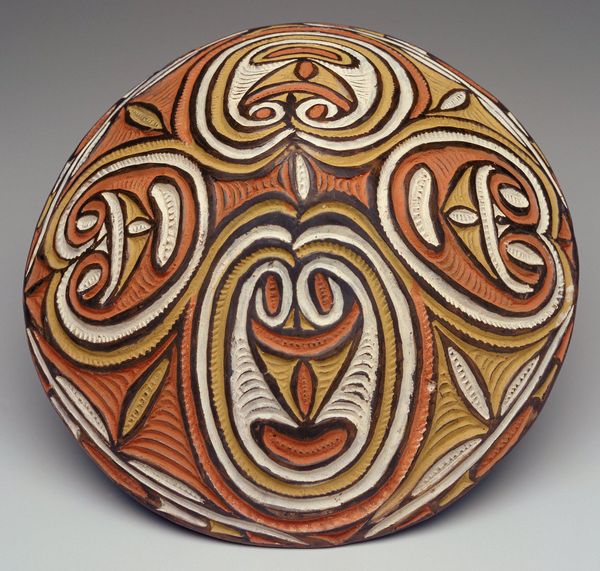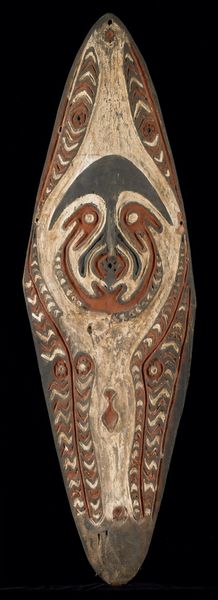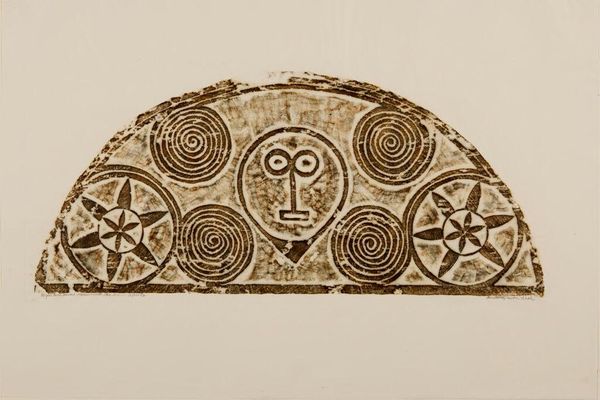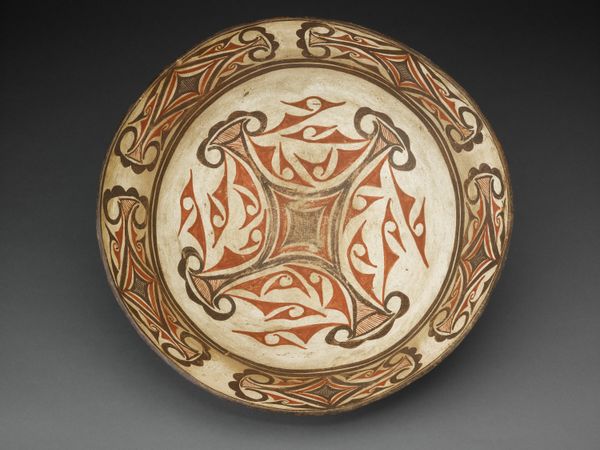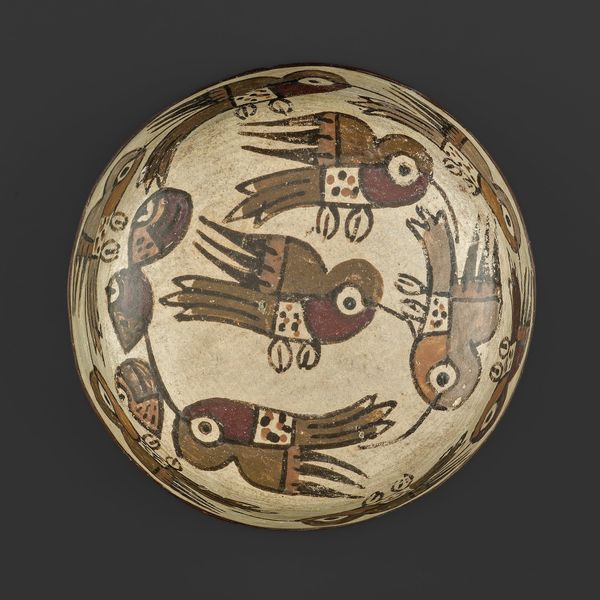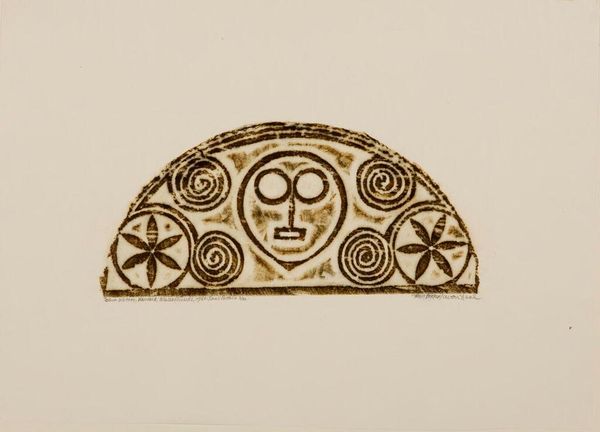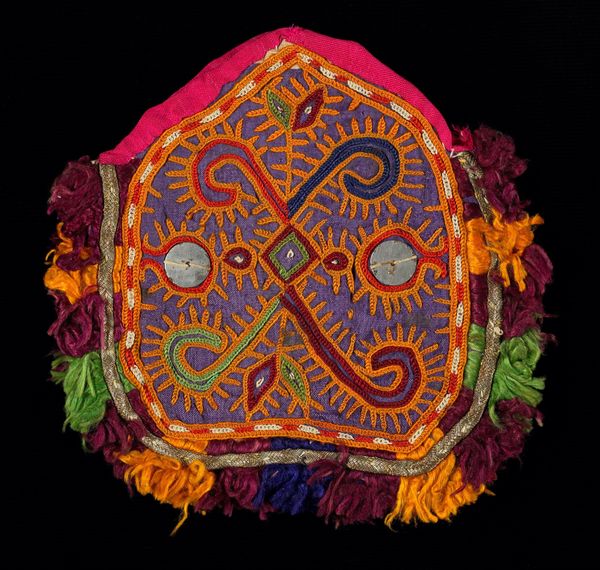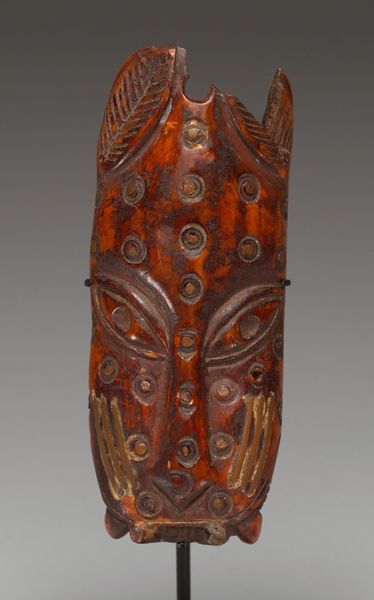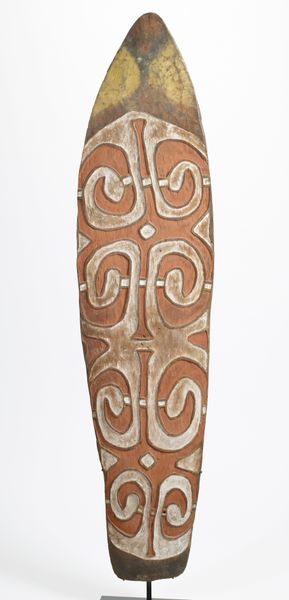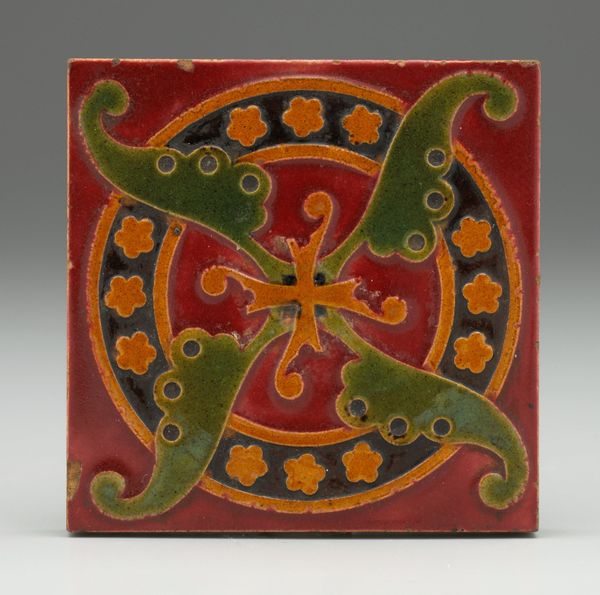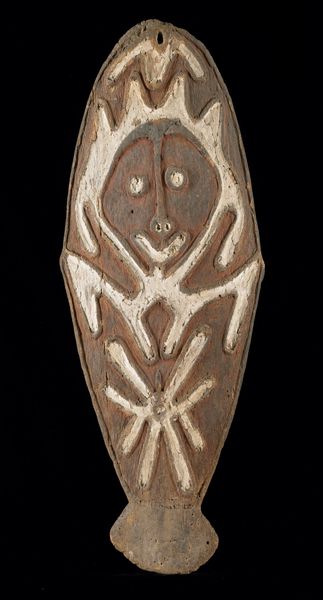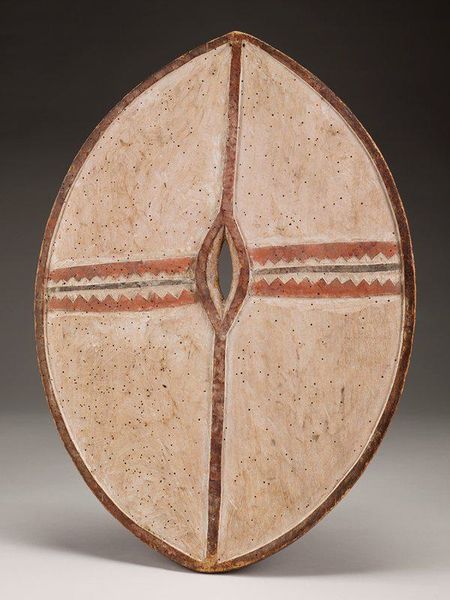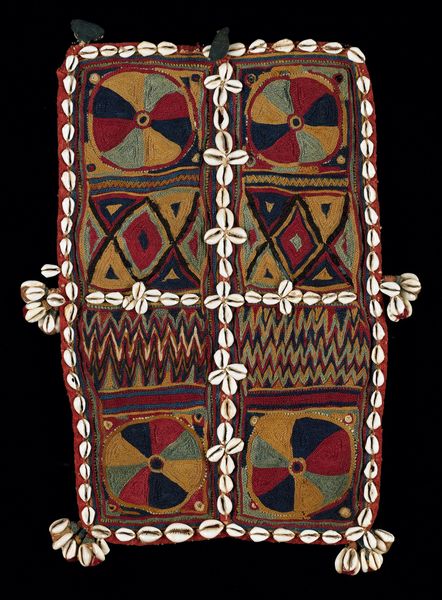
carving, painting, wood
#
natural stone pattern
#
naturalistic pattern
#
carving
#
painting
#
geometric pattern
#
abstract pattern
#
repetitive shape and pattern
#
organic pattern
#
geometric
#
repetition of pattern
#
wood
#
pattern repetition
#
decorative-art
#
layered pattern
#
repetitive pattern
Dimensions: 6 7/16 x 12 in. (16.35 x 30.48 cm)
Copyright: Public Domain
Curator: What strikes me is the dynamism within a constrained form, the way it pulsates. Editor: Indeed. We are looking at a ceramic "Bowl," crafted sometime between 1980 and 1988. The artist is identified as Tshuosh, also known as Sawos. Notice how carving and pigment combine to create layered, repetitive patterns across this object. Curator: "Repetitive" is almost too clinical! For me, it evokes a sense of ancient ritual. There's an almost hypnotic rhythm, isn’t there? A swirling vortex beckoning the eye. I imagine the creator deeply in tune with something vast and unseen. Editor: Certainly. The abstraction within its decorative-art style is intriguing, revealing complex structural relationships between geometric and organic shapes. Observe the meticulous execution of these patterns. The alternating colors guide our eye through a carefully orchestrated sequence. It is a fascinating display of visual unity. Curator: Oh, unity! More than that, it's about feeling anchored. All those lines looping back on themselves like returning thoughts, each shape almost breathing, you know? I could meditate on this for hours. Editor: The circular composition emphasizes wholeness and continuity, reflecting principles in indigenous art of the Americas where the emphasis on design conveys an important understanding about repetitive events, perhaps yearly migrations and celestial changes. The carving suggests a depth that goes beyond surface decoration. Curator: Absolutely! This bowl is less a vessel and more a microcosm, isn’t it? I bet when Tshuosh was creating, he wasn't just thinking of the aesthetics, but imbuing the work with intention, narrative, with stories whispered across generations. Editor: That might be true, and without specific artist insights, focusing on design shows this object, both functionally and symbolically, is one where carefully arranged shape and pattern create an exciting and complex artistic statement. Curator: It speaks volumes without uttering a word, it feels good to be present. Editor: Precisely, the silent yet vibrant language of pure form.
Comments
minneapolisinstituteofart almost 2 years ago
⋮
Bowls such as this are made on the plains north of the Sepik River by the Tshuosh (Sawos), and are hand built by the women using a coiling technique. After the pots have dried, the men decorate them, carving the bottom of the bowl into elaborate curvilinear patterns. Once fired, the bowls are painted with yellow, white, red, and black, enhancing the natural contrast between pigment and clay. Although heavily abstracted, the designs applied to these pots represent specific elements of the natural world. One recognizable shape is the "spirit face" image, a dynamic motif found eight times on this particular example. Despite their commonplace use, eating bowls such as this were always decorated, giving the vessels a spiritual charge.
Join the conversation
Join millions of artists and users on Artera today and experience the ultimate creative platform.
